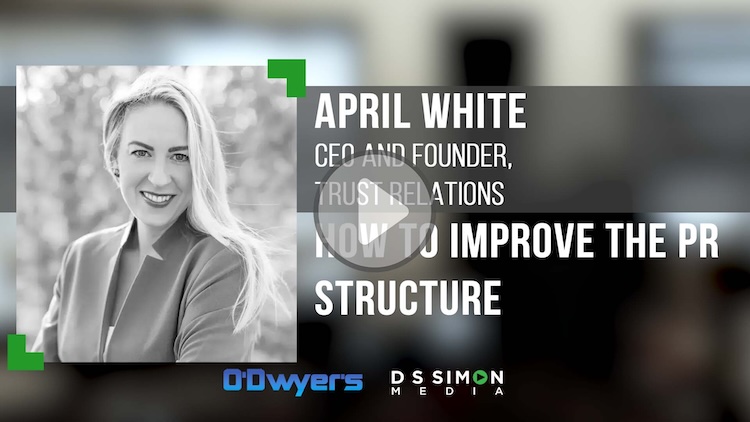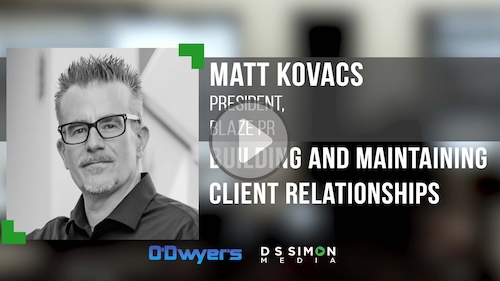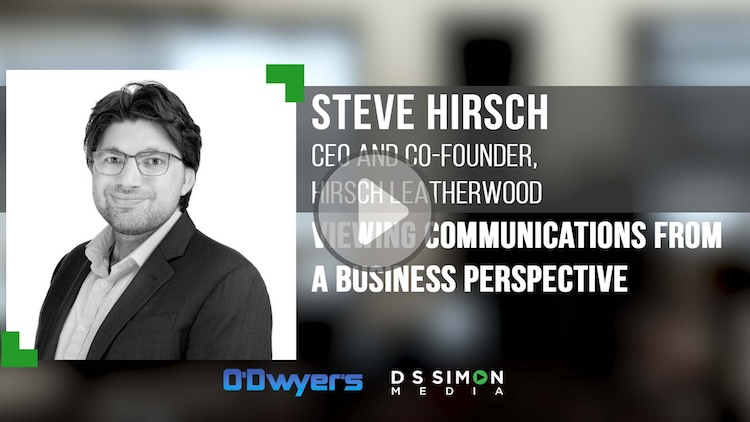 |
| Ryan J. Walker |
When most of us get news of a new client, we start thinking of all the things we could do that would address their reasons for hiring a PR firm—conducting a messaging session, building out their core narratives, creating a media list, introducing them to reporters, determining events and speaking opportunities to go after and much more. The problem is we often stop there, simply doing a bunch of activities.
What many in our industry often forget is that these activities are supposed to mean something. We do them because they’re intended to generate results, help clients get in front of more prospects, and ultimately, move the sales needle. But in any PR firm I’ve worked for—and I’ve found this to be true anecdotally from speaking with friends, colleagues, and partners of other boutique firms as well—there just isn’t a strong focus on the one thing we’re here to do, which is to generate traction in the media.
And while this sounds frustrating to many who would read this—since we all know that wonderful hit of adrenaline from hooking up an amazing story—I would still argue that this isn’t as much of a motivating factor as it should be. I’ve seen so many firms spend their time doing activities that sound like they’re PR-related, but instead, are drifting rudderless through the water hoping that enough time spent on relevant-sounding activities will in the end justify their high retainers.
This reality was depicted in research that showed only 11 percent of B2B organizations are satisfied with their existing PR and marketing communications agencies, while 40 percent of marketing managers admit they find it difficult to measure agency contribution to the overall business.
This is no way to work, and sadly, it inhibits the growth and attractiveness of our industry. Far too many companies who need the discipline of PR are either priced out because of the broken model or are generally dissatisfied with the PR firm they chose because that firm cannot demonstrate results that are consistent with the business investment. This leads to a lower share of the overall marketing budget that executives are willing to devote—damaging our potential to help the very companies who need our guidance the most.
We’ve seen some attempts at correcting this. There are numerous AI-driven tools that can more accurately track media measurement, reporter targeting and more. But these tools were created for PR agencies—not the clients who hire them. If many firms don’t have the right focus to begin with, why would we expect more data to make anything better? More sophisticated measurement of bad results still produces the same outcome: bad results.
What we need to do is stop running away from the tasks that are difficult and require deeper thinking. We don’t need to reinvent how PR is done, but rather, update our priorities so that the only time spent with clients is on activities that will demonstrate results. This requires accepting a few realities—starting with the fact that not everyone on your account team needs to be on every call that a client has with a reporter. And if you’re going to spend time on planning, understand what’s realistic for your client. These types of things just run up your monthly hours and make little difference in your end-of-month recap.
So, what does a stronger focus on results—instead of activities—actually look like? I don’t claim to have all the answers but here are a few thought starters.
Double your time spent on media relations. While every scope is different, and some clients might tell you this isn’t their top priority to reduce the initial pressure of a new relationship, media traction is and always will be the most important product we can provide. You should spend a lot of time on your pitch and structure it in a way that speaks to what reporters are looking for. When it comes to your media list, you should be constantly expanding the number of contacts and sifting through them with a fine-toothed comb to make sure everyone you reach out to is relevant. And lastly, don’t make this part of your scope like fast food menu item where they get just a certain number of pitches a month depending on budget. We should be constantly pitching and constantly engaging. This is a two-way street!
For an example of why this matters so much, a client had recently mentioned that a story we developed and saw through to publishing was ultimately seen by an investor who had never worked with that firm before. The investor reached out, mentioned the article where he learned from the client, and in short order, made a six-figure investment in that client’s business during the following months. What we do has real effects, and this is the function that should be prioritized above all else.
Be a normal person. Stop writing to reporters as if they’re expecting your pitches in their email inboxes. They get dozens of these a day … don’t assume they know exactly what it is your selling or have any interest or familiarity with it. Media relations is an art that can be learned and perfected but requires you to zoom out of your PR career and just think logically for a second. Reporters are real people too and they want to be addressed in the same normal way that we would. The point is to create relationships and show value for their work—which ultimately benefits the clients. Speak as you would want to be spoken to and communicate succinctly.
Assign value to every activity … and reprioritize. Everything we do in PR should offer a return on the client’s investment. And if it’s not providing value, strive to understand why and how it could be changed. Further, while every activity should offer value, this does not mean that value is equally weighted … Some activities provide more value than others. Sometimes this requires more flexibility and if your pitches aren’t hitting, don’t just resort to creating LinkedIn posts instead.
At the end of the day, we’re consultants who are helping companies and individuals increase and improve their public presence. Doing this well requires a business-focused mindset just as much as it does a creative one. And while this has always mattered for our industry, it matters now more than ever. Regardless of what you call it, we are in a difficult economic climate right now, which has the potential to deteriorate even further. Clients need our service but are battling limited budgets and need to demonstrate a return on investment. Let’s make it as easy as possible for them to do this.
***
Ryan J. Walker is founder of R.J. Walker & Co.










 Have a comment? Send it to
Have a comment? Send it to 
No comments have been submitted for this story yet.